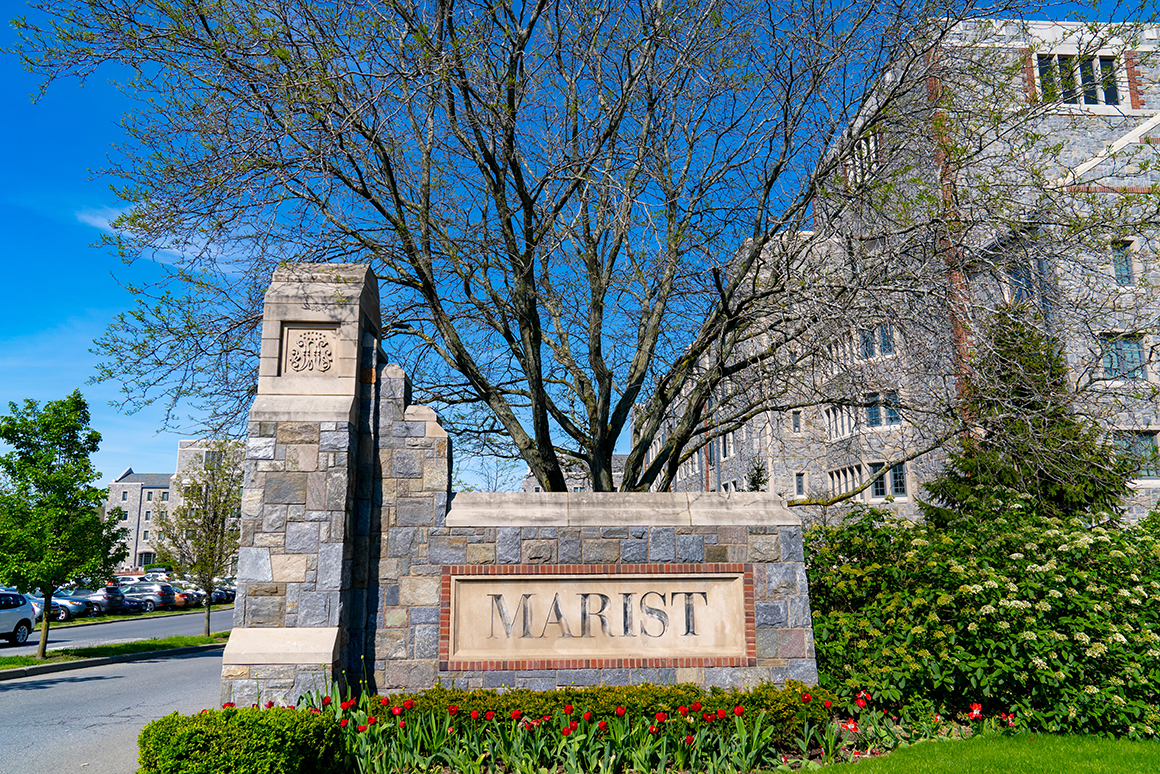Spring 2025

Seven Student Winners Announced
Seven Marist fashion students were recently announced as winners of the Fashion Scholarship Fund (FSF), a nonprofit organization that awards more than $1 million each year in scholarships to some of the most talented fashion students in the country, helping these students succeed in all sectors of the industry.With seven student winners, Marist was ranked among the top three overall for scholarship recipients, reinforcing the College’s excellence in fashion education. Marist is proud to have 25 projects submitted, with six design winners and one merchandising winner among the 439 submissions from 55 institutions nationally. Students must create a 14- to 20-page submission including an executive summary, research, target market information, omnichannel launch plan, six-month financial plan, inspiration boards, various fashion boards, and sketches. “I am thrilled to see seven of our Marist Fashion students excel in such a competitive landscape,” said John Bartlett, director of the Fashion Program. “Two of our winners received the Virgil Abloh ‘Post-Modern’ Scholarships, a new partnership created by the late Mr. Abloh to celebrate the work of Black students." The students who received the Virgil Abloh “Post-Modern” Scholarships are individuals who excel academically and show promise in the industry; these students, along with all winners, receive $7,500 and individual mentoring. “The mission of the Virgil Abloh ‘Post-Modern’ Scholarship Fund is to foster equity and inclusion within the fashion industry by providing scholarships to students of academic promise of Black, African-American, or African descent,” according to the FSF webpage.Recently named by Forbes magazine as one of the Best Colleges That are Shaping the Future of Fashion, Marist Fashion has a storied history in graduating students who have won FSF awards. This is a result of the dedicated faculty who act as mentors throughout the timeline of their projects. “This reiterates Marist Fashion being ranked one of the top 10 fashion schools by Forbes magazine and standing out amongst our competitors,” said Rebecca Brown, professional lecturer of fashion merchandising. The 2021 winners include: • Madi Breeman ’23 – Merchandising• Mark Bissell ’22 – Design/Product Development• Shannon Wines ’23 – Design/Product Development• Ashley Catalano – ’22 Design/Product Development• Camille McHenry ’22 – Design/Product Development – Virgil Abloh “Post-Modern” • Taliyah Coles ’22 – Design/Product Development – Virgil Abloh “Post-Modern”• Madeline McCarthy ’22 – Design/Product DevelopmentFSF Scholarship winners receive numerous networking opportunities including career fairs, mentorship, masterclasses, and more. “I am very proud of our students and our faculty mentors who support them. I believe these honors speak to the value of a fashion program within a liberal arts institution,” said Jacqueline Reich, dean of the School of Communication and the Arts.
10 Jan 2022

Winter 2022
Updates on graduates from the class of 1980 through the class of 1989
01 Jan 2021

Winter 2022
Updates on graduates from the class of 1970 through the class of 1979
01 Jan 2021

In keeping with the traditions of great American and European universities, Marist’s gates are an important part of campus and an iconic symbol of the institution.
In keeping with the traditions of great American and European universities, Marist’s gates are an important part of campus and an iconic symbol of the institution. Celebrating the history of the College and the surrounding Hudson River Valley, these three distinctive gates provide entrance to the western half of the Marist campus from Route 9. During colonial times, Route 9 was known as the Albany Post Road and later the King’s Road; it ran north from New York City to Albany and remains a well-traveled thoroughfare today. The College’s campus gates were designed by Kevin M. Smith, a partner in the world-renowned firm of Robert A.M. Stern Architects (RAMSA). The gates’ design and materials – grey stone, red brick, and limestone – reflect Marist’s unique architectural palette, which is derived from the Greystone, Kieran Gate House, and St. Peter’s buildings. These 150-year-old structures are original to the Bech estate on which Marist is built, and they serve as architectural inspiration for more modern campus buildings. Together, Marist’s gates establish a presence for the College along Route 9 and help define the campus’s evolving architectural language.Smith and the RAMSA team coined a specific term to describe the architectural style they designed for Marist: “Hudson Valley Modern Gothic,” which pays homage to the region’s tradition of picturesque architecture, beginning in the 19th century, when the Hudson River developed into “America’s Rhine.” The idea of castle-like buildings seen from the river against the area’s stunning topography relates to the similar aesthetic underpinnings of the Hudson River School in painting, which was active during the same period. Hudson Valley Modern Gothic represents a cleaner look for the architecture, mostly without pitched roofs, that looks to the future while acknowledging the region’s history, and particularly the architecture of Greystone, with its rubble stone walls trimmed in red brick. This feature is common in parts of Europe, especially in eastern France and parts of Germany. Read more about the gates here.
25 Aug 2021